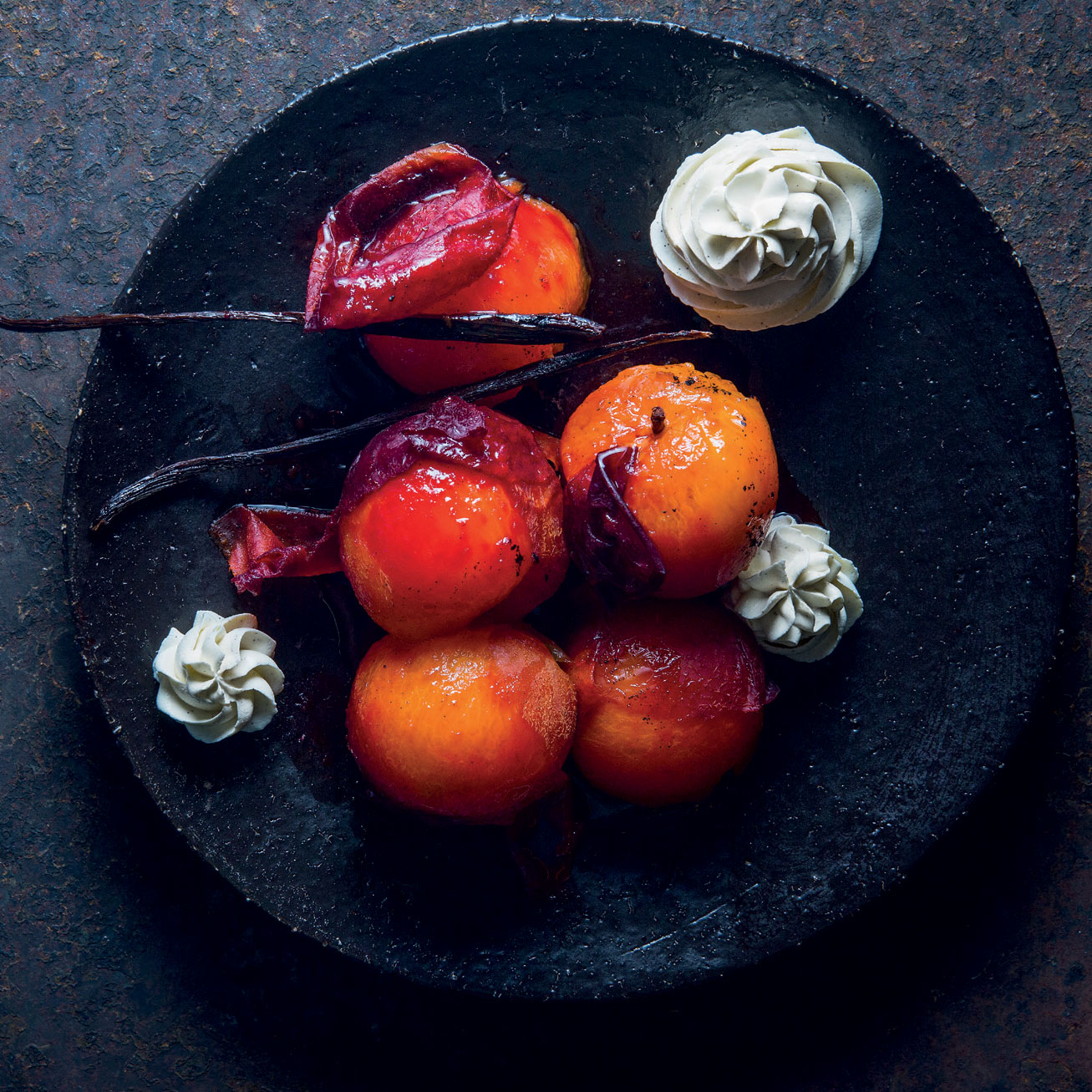How to poach any kind of fruit
Step away from that can! Poaching fruit is easier than you think and a great way to preserve seasonal fruit, making it economical, too. We’re breaking down everything you need to know about poaching every kind of fruit.
What is poached fruit?
Firstly, a little explainer. Poaching refers to cooking fruit gently in a sweetened liquid, usually a sugar syrup. The process of poaching cooks the fruit, but also acts as a method of preserving it when it’s stored in the cooking liquid. The poaching liquid can be left as is, or infused with herbs, spices, and even citrus zest. The liquid can also be reduced to form a glaze, usually served alongside the poached fruit. It can also be stored in the fridge as a flavoured syrup or base ready for the next batch of poaching.
What to know about poaching fruit
When it comes to the fruit you choose, there really is no limit. Everything from apples and pears to peaches and plums to strawberries, cherries and even mango can be poached. The trick is to make sure your fruit is ripe and firm – nothing too soft or overripe. For the liquid, you can stick to a basic syrup or you can go wild by using red or white wine, tea or even fresh fruit juice. Depending on when you’re planning on serving the fruit (i.e. for breakfast or dessert), you’ll need to adjust the sweetness levels. Generally work on 100 g of sugar for every cup of water. The cooking process (as laid out below) isn’t very time- or labour-intensive. Most fruit, depending on its ripeness, will only need 15–20 minutes’ cooking time.
Flavour options
Once you’ve settled on a poaching liquid, you can add further flavour to it by infusing it with other ingredients. Vanilla pods and cinnamon sticks are excellent obvious choices, but try star anise, black peppercorns and even nutmeg. Almost any herb will work too, such as mint, rosemary, thyme, but also try things like lemongrass or lavender. You can also add lemon or orange peel, or the zest right at the end of the cooking process to add a bit of brightness. Remember that you can either store the cooked fruit in a sealed jar in its poaching liquid, or once the cooking process is done, remove the fruit and reduce the syrup to a stickier, glaze-like consistency to drizzle over the finished product. The leftover syrup could also be used as a cordial for cocktails and home-made sodas – bonus points for adding in some of your poached fruit, too.
You’ll find our general poaching fruit step-by-step below, but here are some of our favourite poached fruit recipes.
 Get the recipe for spicy poached plums with whipped crème fraîche here.
Get the recipe for spicy poached plums with whipped crème fraîche here.
 Get the recipe for rosé-and-ginger poached pears with mascarpone and crushed biscotti here.
Get the recipe for rosé-and-ginger poached pears with mascarpone and crushed biscotti here.
Method
Combine 3 cups water, 300 g sugar and any herbs or spices you like (cinnamon, nutmeg, star anise, vanilla seeds, etc.)
Bring to a boil, reduce the heat and add 6 plums, peaches, apples or pears (pears and apples should be peeled and halved) making sure they’re fully submerged in the liquid. Poach for 15 minutes – they shouldn’t be too soft, and hold their shape.
Once the fruit is just cooked, remove from the poaching liquid, increase the heat and reduce the liquid until syrupy. Alternatively, leave the fruit in the liquid to cool and store in a sealed jar in the fridge.

 Get the recipe for poached guavas with custard here.
Get the recipe for poached guavas with custard here.






Comments